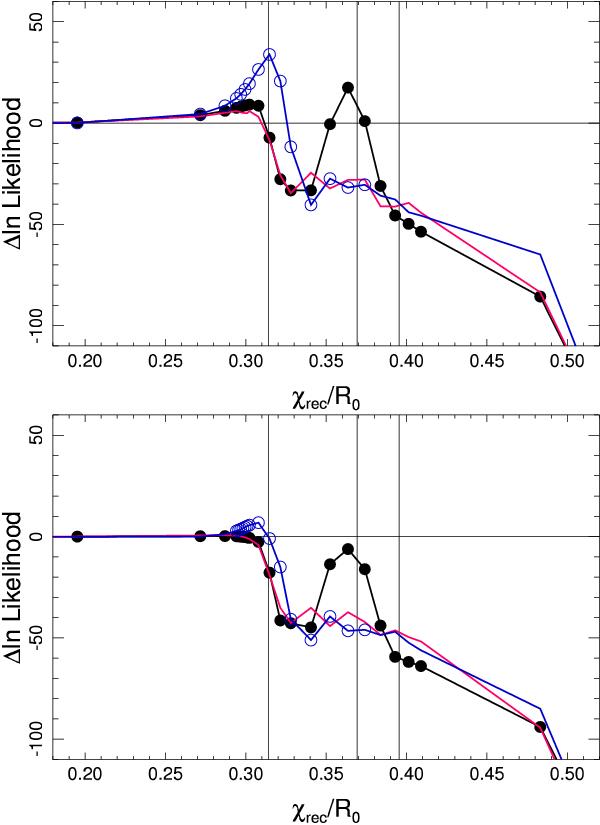Fig. 10

Test for likelihood detectability of compactified space for the example of a dodecahedral (I∗) closed universe. The vertical axis shows the log-likelihood relative to the largest model considered. Values are given for the orientations of the models which maximize the likelihood (top) and marginalized over the orientations (bottom). Different size models are tested against two HEALPix Nside = 16 temperature realizations drawn from the model with χrec/R0 = 0.314 = ℛi (blue) and χrec/R0 = 0.361 (black). No noise is added and the common mask has been applied. Dots mark the positions of the models for which the likelihoods were computed. The vertical lines show characteristic scales of the fundamental domain of the models in the units of curvature, from smaller to larger, ℛi/R0, ℛm/R0 and ℛu/R0. The variable χrec/R0 gives the size of the last scattering surface in the same units. The R0 → ∞ limit corresponds to the flat simply-connected space. Both maximized and marginalized likelihoods show a detection relative to the isotropic sky realization drawn from the fiducial flat infinite universe (red) with the detection stronger for smaller spaces. However only the maximized likelihood unambigously distinguishes the correct compact model from spaces that exceed the last-scattering diameter, which shows that the likelihood for small models is narrowly peaked at the correct orientation and suppressed otherwise.
Current usage metrics show cumulative count of Article Views (full-text article views including HTML views, PDF and ePub downloads, according to the available data) and Abstracts Views on Vision4Press platform.
Data correspond to usage on the plateform after 2015. The current usage metrics is available 48-96 hours after online publication and is updated daily on week days.
Initial download of the metrics may take a while.


